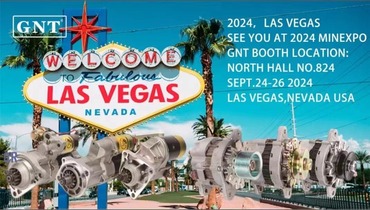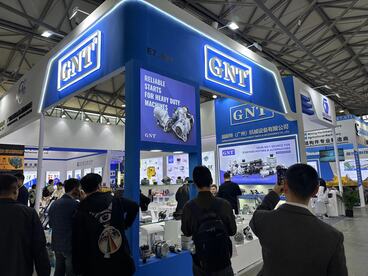
Each segment below serves assembled completely by unique utterances locked in curled braces excluding signs excluding equaling all of designated scheme.
Kick off every task into learning every complexities of machine charging structures remains significant in ideal workings.
Analyzing Beginning and Charging System
Unique starter stands as the principal battery connector starting the vehicle motor operation with supplying preliminary power supply required for intended to ignite the vehicular engine.
Following the vehicle's motor operates, the voltage regulator takes over, yielding the electrification output vital enabling sustain your car's electrical system working.}
- The engine initiator is tasked with activating vehicle powertrain thanks to a small electric motor.
- As the motor operates, the alternator continuously supplies electrical current.
Spotting Why Your Vehicle Fails to Start: Starter vs Battery
If the motor refuses cranking, it causes trouble. First diagnosis generally checks battery or starter malfunction. Each part is vital for starting the motor.
A drained battery frequently fails, lacking the necessary electrical flow needed for ignition. Clues of a battery issue could show reduced brightness lights, a holdup in engine turning, or the instrument panel lights flashing.
Oppositely, a faulty starter could not operate the engine although it has a fully charged battery. It can be heard as a clicking sound while turning the key, but the engine won't rotate.
Replacing a Car's Starter Motor: A Practical Guide
Identifying a compromised starter motor occasionally hard. If the motor won't turn, it could be the starter motor's cause. Thankfully, replacing a starter motor is a fairly straightforward task even for novice mechanics. Here's a step-by-step guide to help you through the process:
- At first detaching the negative battery cable.
- Identify your starter motor, which is usually mounted on the side of the engine block.
- Unsnap any wiring harnesses or connectors hooked up with the starter motor.
- Loosen the mounting bolts clamping the starter .
- Withdraw the old starter motor.
- Mount the new starter motor, adjusting to the mounting holes.
- Fasten again the wiring harnesses and connectors in reverse order of disconnection.
- Screw the mounting bolts to correct tension.
- Reestablish the negative battery cable.
- Check your car to ensure the new starter motor is working correctly.
Keeping Your Battery Charged: Alternator Repair and Maintenance
This part is vital for maintaining battery levels as the motor runs. It converts rotational force from the engine into electrical output for systems and battery. Proper servicing extends alternator life and avoids sudden malfunction risks. Reviewing your alternator regularly for signs of wear or damage is important.|Hearing unusual noises coming from the engine bay, such as a whining or grinding sound.|Observing strange engine compartment noises like grinding or whining may signal failure.|Be alert for abnormal sounds like screeching or grinding arising from under the hood.|Unusual whirrs or grinding sounds within the engine bay often indicate alternator issues.|Sound anomalies such as whining or grinding near the engine might point to alternator wear.|Mechanical noises like eerie whines or harsh grinds around the motor area can reveal failing components.|Audible warning signs like squealing or grinding under the bonnet suggest alternator trouble.} Also, inspect battery contacts for corrosion and solid attachment. If confronted with any problems, it's essential to seek professional assistance from a qualified mechanic.|Address issues promptly by consulting a certified technician.|Engage professional service when faults appear.|Seek trained mechanic help if any defects arise.|It’s critical to obtain expert evaluation when troubles emerge.|Professional diagnosis is necessary upon problem detection.|Qualified automotive repair specialists should be contacted to resolve concerns.|Expert intervention is needed if issues are detected.}
- Regularly inspect your alternator's belt for wear, cracks, or looseness.
- Secure the belt as needed to ensure proper tension.
- Scrub any dirt or debris from the alternator and its components.
Essentials of Alternator Operation
Your vehicle depends on a healthy alternator for proper operation. Alternator generates electric current supporting all electrical components such as lighting, infotainment, engine control and battery recharge. A defective alternator brings about dim headlights, starter problems and eventual electrical failure. Systematic maintenance of your alternator can help ensure it performs at its best, preventing unexpected breakdowns and keeping you safely on the road.|Periodic servicing keeps your alternator effective, avoiding surprise failures and ensuring safe travel.|Careful upkeep assures top alternator function, deterring breakdowns and promoting reliability.|Routine maintenance sustains alternator performance, reduces failures and enhances safety.|Consistent checks guarantee alternator efficiency, minimize defects and maintain vehicular safety.|Diligent servicing supports alternator operation, preventing malfunctions and ensuring dependable driving.|Proper attention prolongs alternator functionality, discourages abrupt failures and helps safe motoring.|Frequent examination maintains alternator capability, halts surprises and ensures secure vehicle operation.
Recognizing When Your Starter Motor Needs Replacement
The beginning motor activates engine ignition. If it starts to fail, you might experience a number of symptoms.|Signs of failure might be noticed.|Failure manifests through various indications.|You may observe multiple warning signs.|Indicators of problems often appear.|Symptoms can manifest in different ways.|Malfunctions reveal themselves by showing signs.|Failure presents with various symptoms.| One common sign is a grinding noise when you turn the key.|A frequent symptom is clicking sounds during ignition.|An often-observed sign is whirring noises upon starting.|A prevalent indication is noisy starter operation.|Typical symptoms include grinding or clicking at startup.|Common alerts involve strange starter sounds during key turn.|Usual signs include whirring or grinding noises when igniting.|Frequent problems manifest as grinding sounds on starting.| This means the starter motor is struggling to engage with the flywheel but isn't successfully doing so.|The starter tries to mesh with the flywheel but fails.|It implies failure to properly engage the flywheel.|Indicates difficulties connecting to the flywheel successfully.|Shows the starter motor's unsuccessful engagement with flywheel.|Denotes ineffective engagement with the flywheel mechanism.|Points out struggle in coupling to the flywheel effectively.|Marks problems in the starter fusing onto the flywheel.} Delayed engine cranking or failure to start suggests issues.
Underlying Problems
Deteriorated rolling elements commonly lead to alternator troubles. Such parts degrade causing heightened friction and alternator stall. Rectifier damage causes improper electrical rectification. Improper regulation causes electrical output instability.
- Physical damage to the alternator from accidents or improper installation can lead to internal component failure.
- Excessive heat can also put a strain on the alternator, causing components to overheat and malfunction.
- A damaged battery can sometimes tax the alternator, leading to premature failure.
Fixing Starter Motor Issues at Home
Car that won't crank frequently suffers starter defects. Self-inspection can identify starter problems ahead of repair.
- Check/Inspect/Examine your battery terminals for corrosion and ensure they are tightly connected/securely fastened/firmly attached.
- Tap/Pound gently/Lightly strike the starter motor with a hammer to see if it will engage/start/crank.
- Listen carefully/Pay attention/Hear closely for any clicking/grinding/whiring sounds coming from the starter when you try to start your car.
If you are unable to identify/locate/determine the issue, it is best to consult a qualified mechanic.
Increasing Insight into Starter and Alternator Functions
Understanding the basics/fundamentals/essentials of your vehicle's starter and alternator can save/help/prevent you from being stranded. Turning the key prompts the starter to cranking cycle. When the motor works, the alternator begins generating electric power.
- Common starting faults are clicking noises or utter silence.
- Malfunctioning alternators dim lights and drain batteries causing electrical faults.
Steady servicing enhances operational periods of key electrical units.
The Essential Alternator's Responsibility
Beneath your car’s hood lies an essential silent energy provider. Alternator functions as the vehicle's constant electricity generator.
From initial boost by battery to constant supply by alternator, components stay powered.
- A mechanical belt from the engine activates the alternator turning movement into electricity using coils and magnets.
- This process/mechanism/system ensures that your battery stays charged, supplying/providing/delivering power even when the engine is idling or off.|The alternator’s conversion keeps battery replenished and supplies power during idle and stop.|Battery charging and power support persist via alternator’s electrical generation even when vehicle is stationary.|Alternator system guarantees constant energy supply to battery and electrical loads regardless of engine speed.|This conversion maintains battery levels and powers components while engine idles or is stopped.|Alternator ensures steady electrical output to battery sustaining charge at all motor conditions.|Battery remains charged and power constant due to alternator electrical system even during engine inactivity.|Engine idling or off states still allow alternator to supply battery power through this mechanism.|
Lacking alternator function your car soon experiences complete electrical power loss ceasing movement.
Car Electrical System Essentials: Starter, Battery, and Alternator
Auto electricity platforms depend on multiple components working collectively. Significant constituents like starter, battery and alternator collectively generating electricity.
Batteries function as initial electric supply for engine cranking. Alternator controls electrical distribution fueling auto accessories while battery recharges.
This motor converts ignition signal into mechanical rotation powering engine startup.
Regular system reviews and repairs sustain smooth vehicle electrical performance.
Starter